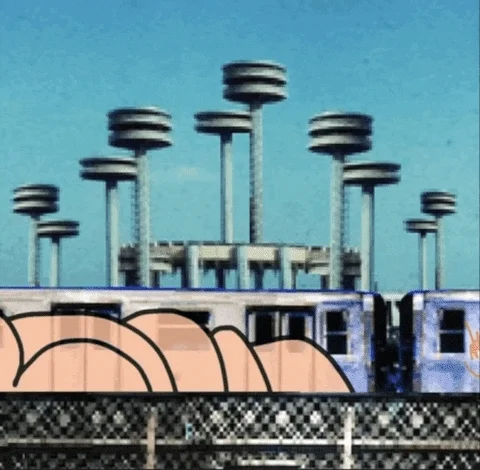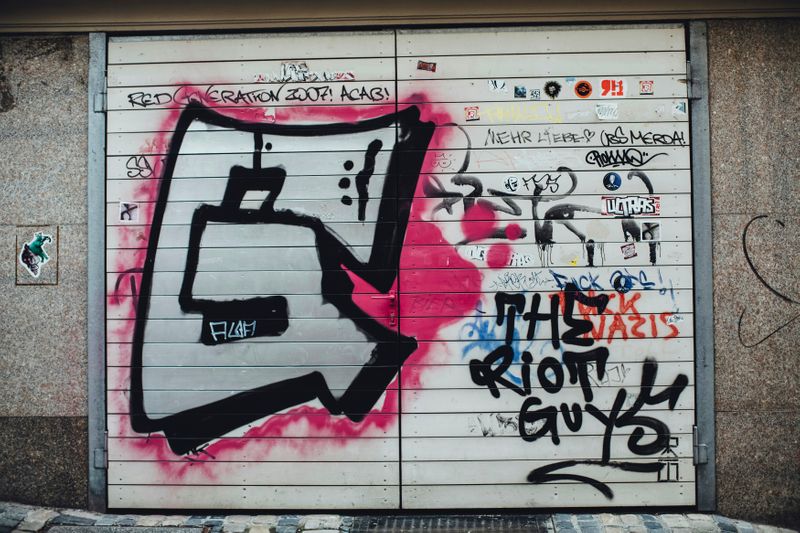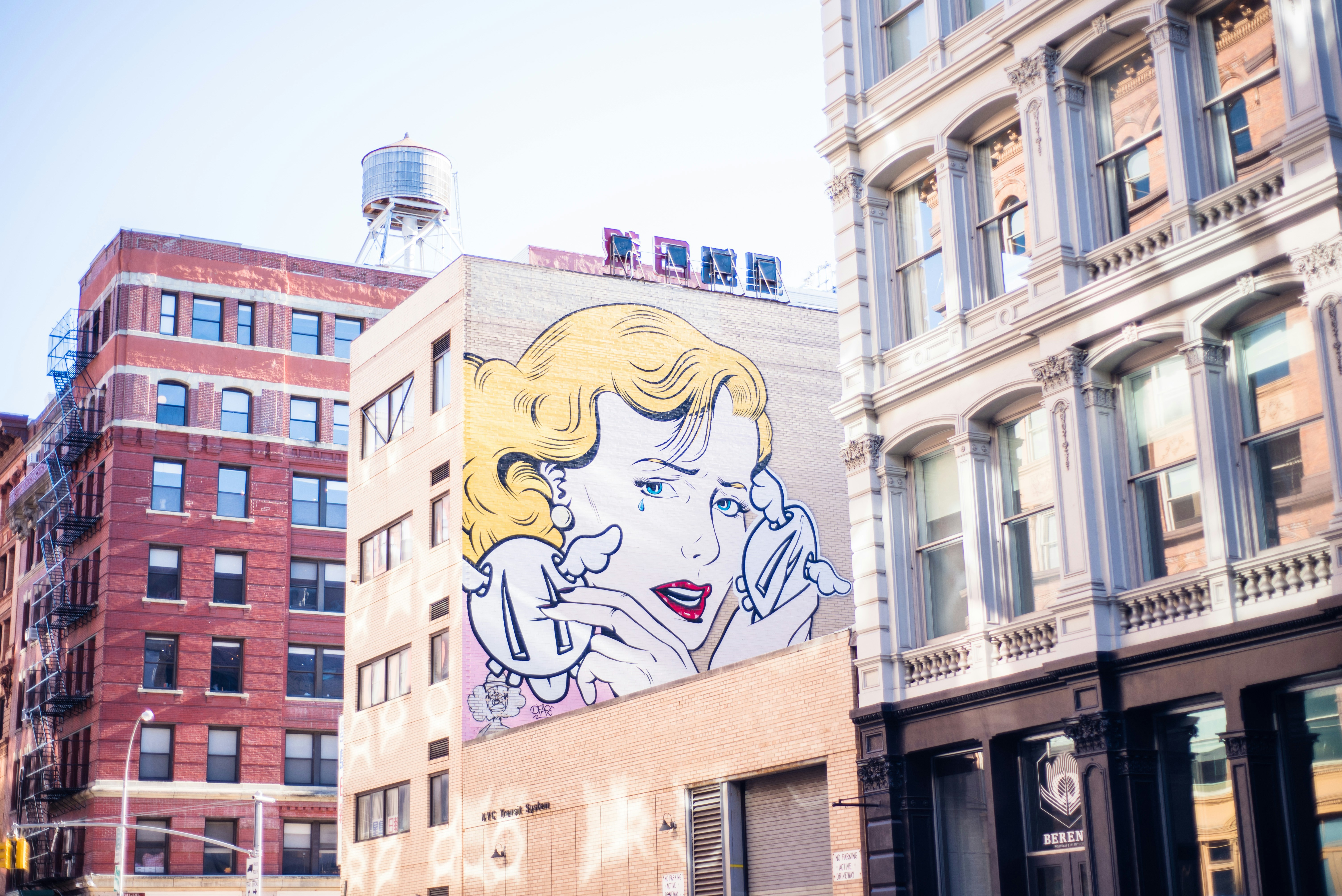Have you ever seen a passing train covered with graffiti, and wonder who painted it?
Are you curious about street art, or want to know what graffiti and tagging are all about?

You're in luck! Discover how modern graffiti came about, and how to tell the difference between graffiti and tagging.
What is graffiti?
In most countries, graffiti markings on public or private property are considered vandalism and illegal.
However, street art, which may include murals or images created by graffiti artists, in public spaces that have been commissioned, are legal forms of graffiti art because permission has beengranted to complete the works.
 Photo by Scott Webb on Unsplash
Photo by Scott Webb on UnsplashGraffiti:
refers to any writings, drawings or visual imagery applied in public areas, such as buildings, trains, sidewalks, bus stops, subway walls, etc.
shows imagery that can range from simple written words, nicknames, or street names (pseudonyms) to complex and elaborate wall paintings.

is typically painted or drawn using spray paint, wall paint, markers, chalk, or other permanent art mediums.
can also be scratched into public surfaces using tools, or applied as a pre-made sticker onto a public surface.

What are the major types of graffiti?
 Photo by Markus Spiske on Unsplash
Photo by Markus Spiske on UnsplashIllegal types:
Gang graffiti is used to mark turf, show expansion of territory, show alliances or affiliations, or memorialize deceased members.
Copycat graffiti mimics gang graffiti but has no relation to any specific gangs.
Tag graffiti is a simple form of graffiti that often shows the graffiti writer’s signature that is unique to them.

Conventional graffiti is typically seen as a fun, spontaneous act that is done once, usually without any malicious intent.
Hate graffiti shows words, images, or phrases that demean racial, religious, or cultural groups.
Legal types:
 Photo by Mercedes Álvarez on Unsplash
Photo by Mercedes Álvarez on UnsplashAny street artworks showing murals or images in public spaces that have been commissioned with permission granted to graffiti artists to complete the works.
What is tagging?
Tagging is a term to describe a simple form of graffiti that shows the graffiti writer’s signature, logo, or street name (pseudonym) in a handstyle unique to the writer.

Tagging:
is considered the first form of modern graffiti that originated in Philadelphia and New York City, during the 1960’s and 1970's.
is greatly influenced by hip-hop culture.

typically includes bright colors that contrast with background colors.
when in a public space indicates the graffiti writer’s presence in that space.
 Photo by Sergi Viladesau on Unsplash
Photo by Sergi Viladesau on UnsplashTags can be:
included beside more elaborate graffiti designs like in an artist's signature.

created as hand-drawn sticker art or “slaps”, which are portable, faster to install, and can be shared or collected amongst graffiti artists.
Key differences between graffiti and tagging

Graffiti:
shows any writings, images, or drawings created on public surfaces easily viewed by the public.
can range from simple logos to complex wall paintings.
that is more elaborate is riskier to create with a higher chance of getting caught.
can be applied on public surfaces illegally, or as legally commissioned murals, street art, and elaborate paintings on public walls.
typically uses more traditional artist materials (spray paint, markers, chalks, etc.), though stickers could be included in a larger graffiti piece.

Tagging:
refers specifically to writing the artist’s signature, logo, or pseudonym on a public surface.
is the simplest form of graffiti that is applied quickly to public surfaces.
can be applied directly to surfaces quickly to avoid detection.
is more likely to be considered vandalism than complex graffiti styles due to its simplistic forms.
can be created as hand-drawn sticker art and applied quickly to surfaces.
Scenario: Michael's Dilemma
 Photo by Ayo Ogunseinde on Unsplash
Photo by Ayo Ogunseinde on UnsplashMeet Michael.
He is a secondary student who has recently discovered a passion for drawing and painting, but he's never taken a high school art class.
In the fall of his senior year, Michael met with his school counsellor to discuss future careers. Michael mentioned that he wanted to create graffiti-style art and murals. His counsellor chuckled, and informed him that graffiti was illegal and to consider more realistic careers.
After trying unsuccessfully to explain to the counsellor that there are legal forms of graffiti-style art, Michael left his meeting feeling unheard and disappointed.
After learning about the differences between graffiti and tagging, what advice would you offer Michael to support his goals of being a graffiti-style artist and muralist?
Option A: Meet with the art teacher to get advice about further training as a graffiti-style artist or muralist, and to discuss the steps required to do it legally (application process, permission forms, etc.).
Option B: Practice painting graffiti or a mural on an outside wall of the high school building away from view.
Option C: Check out graffiti artists on social media platforms like Instagram, YouTube, or TikTok to network and view their graffiti techniques and legal mural works.
Option D: Learn and practice graffiti techniques by watching online tutorials about how to create graffiti art, and follow step-by-step guides to create graffiti letters.
Quiz
Select all that apply:
Take Action
Your feedback matters to us.
This Byte helped me better understand the topic.

